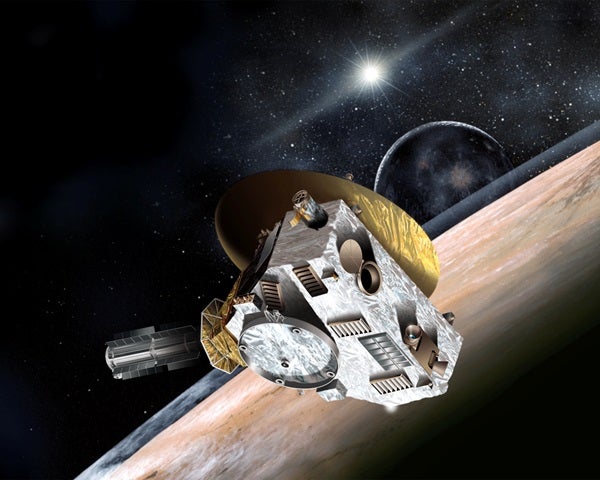Updated 12:11 p.m.
In the 1970s, NASA stopped sending spacecraft to Mars. And the Red Planet reconnaissance didn’t resume for two decades. That revival wasn’t accidental. In large part, NASA started sending spacecraft to Mars again because of a group of young graduate students and postdocs who banded together and forced the issue, calling themselves the Mars Underground.
Less than a decade later, in May 1989, Alan Stern and about a dozen planetary scientists gathered for dinner at a small Italian restaurant in downtown Baltimore. They called themselves the Pluto Underground, and the group decided to apply the same strategy to get NASA on board with a mission to Pluto.
“We sort of Xeroxed the brand,” Stern told Astronomy in a recent interview.
The group’s founding members included Stern, Fran Bagenal, Rick Binzel, Marc Buie, Bob Marcialis, Bill McKinnon, Ralph McNutt, Bob Millis, Ed Tedesco, Larry Trafton, Larry Wasserman, and Roger Yelle. The dozen were concerned with what Stern then called the “regrettable” decision not to send either Voyager spacecraft past Pluto.
That choice (outlined in my previous Year of Pluto post) was understandable when it was made in the 1970s and scientists knew little of Pluto or its neighborhood. But fascinating finds had pushed Pluto to the frontiers of planetary science, and astronomers were feeling some buyers’ remorse.
Compounding the issue, NASA was caught up in big budget follow-up missions like Cassini, Galileo, and Mars Observer. According to Stern, over pasta that May evening in 1989, the Pluto Underground kicked off a letter writing campaign to NASA Headquarters that would “raise the flag of Pluto exploration so high that it could not be ignored.”
Fortune was on their side. When Voyager swooped past Neptune later that summer, the planet’s large and icy moon, Triton, made a forceful case for exploring Pluto. Triton appeared to be its kidnapped twin.
Just two months after the Triton flyby, NASA, under the leadership of Robert Farquhar of Goddard Space Flight Center, began its first study of a mission to the then ninth planet, called Pluto 350. Instead of the gluttonous missions already under development, Pluto 350 wanted a cheaper, simplified method of doing reconnaissance at the solar system frontier. Farquhar had already proven his innovative designs by spearheading the first mission to a comet and doing it on short notice.
Updated 12:11 p.m.
The Pluto Underground continued to play its part by outlining their many science motivations for the trip. The way they saw it, Pluto 350 needed a rushed delivery. Astronomers had already used NASA’s flying telescope, Kuiper, to discover the world had an atmosphere. But as Pluto pushed away from the Sun, its atmosphere would collapse back onto the surface. That demise was predicted to play out between 2010 and 2020.
What the group didn’t know was that behind the scenes of the Jet Propulsion Laboratory in Pasadena, California, engineers were already working on a stripped-down trip called Pluto Fast Flyby, which was inspired by a commemorative stamp set describing the last planet as “Not yet explored” (more on that later).
By 1992, a panel settled on Pluto Fast Flyby over the similar Pluto 350. In the coming years, more mission objectives were combined into the spacecraft and it became Pluto Express, which was ultimately renamed New Horizons and launched in 2006.
Stern, and many other members of the Pluto Underground, played a role in each of the official Pluto missions.
Among his many contributions are Ralph and Alice (a nod to The Honeymooners), a pair of New Horizons imagers that give the spacecraft its sight so named because they are divorced on the spacecraft.
Writing in the excellent 1998 book Pluto and Charon that he wrote with Jacqueline Mitton, Stern compared astronomers’ pre-spacecraft visit knowledge of the system to what was known about Mars before Mariner 4, or Io ahead of Voyager’s arrival in 1979.
“We must remove the curtain that distance imposes, in order to finally embrace and understand the reality of the world. Nothing substitutes for being there,” he wrote.
That curtain will lift in the coming weeks.
Eric Betz is an associate editor of Astronomy. He’s on Twitter: @ericbetz.










